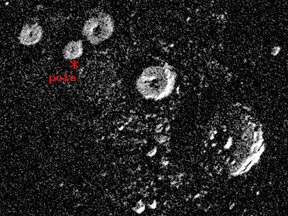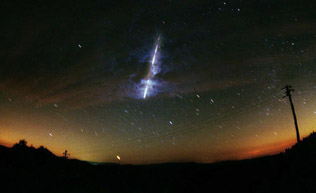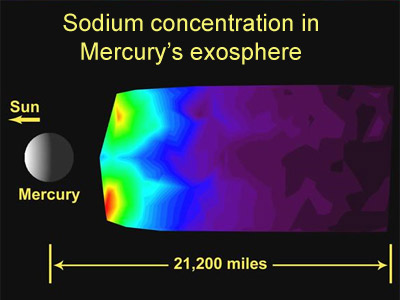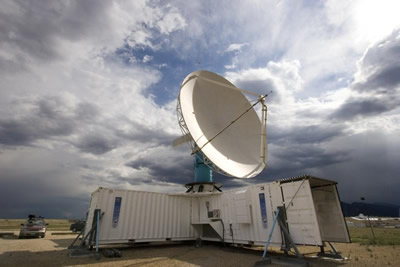Click on image for full size
Image courtesy of NAIC - Arecibo Observatory, a facility of the NSF (J. Harmon, P. Perrilat, and M. Slade).
Mercury's Poles
If Uranus is the "tilted planet", Mercury might be called the "upright planet". The spin axis of Uranus, which defines the locations of the planet's North and South Poles, is tilted by 98°. The spin axis of Mercury, however, is barely tilted at all. Our best measurements indicate that Mercury's tilt is at most a miniscule 0.027°. That is by far the least tilt of any planet in our Solar System; even Jupiter's relatively small 3.1° tilt ranks it a distant second to Mercury.
Earth's 23° tilt causes our planet to have seasons. Most other planets are also tilted (to varying degrees), and therefore have seasonal variations as well. Lacking a tilted axis, Mercury has no seasons. This virtual lack of tilt would provide observers at Mercury's poles with odd views of the Sun. The Sun, which would appear much larger in the sky than it does at Earth because Mercury is closer to the Sun, would always hover at the horizon as seen from Mercury's poles. The Sun would neither fully rise above the horizon nor would it ever completely set. It would appear to bob up and down slightly, due to the small axial tilt, as it gradually traveled all the way around the horizon.
Of course, Mercury is not a perfectly smooth sphere. The surface of Mercury, including the ground near the poles, is pocked with numerous impact craters from meteors. It is possible that sunlight never shines on the central "floors" of some polar craters. The perpetual ultra-low sun angle near the poles combines with the encircling "hill" of the crater's rim to keep the interior floor of the crater in permanent shadow.
Mercury, due to its proximity to the Sun, is very hot. The average surface temperature is around 167° C (333° F), and the hottest equatorial temperatures soar to a scorching 452° C (845° F). However, scientists think there might be ice in the bottom of some of the polar craters! The crater floors may stay cool enough to harbor ice because sunlight never shines there. Scientists have taken radar images of what they think (but are not completely certain) are water ice deposits in the bottoms of some polar craters.
Mercury has a weak magnetic field, about 1% as strong as Earth's. Like Earth's field, the magnetic field of Mercury is slightly tilted so that the planet's magnetic poles are not in the same place as its geographic poles.













